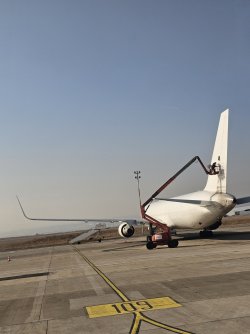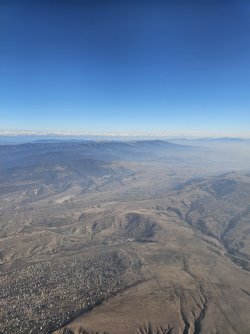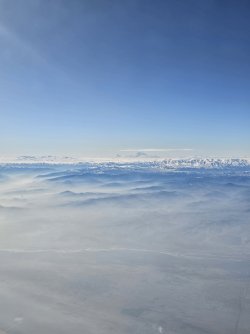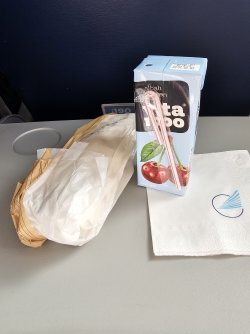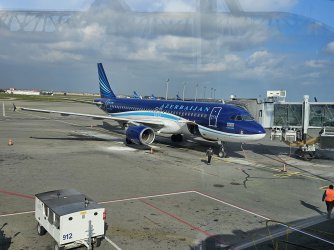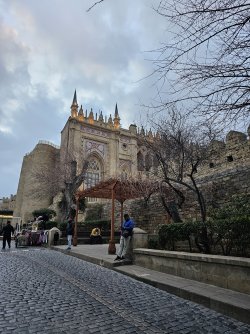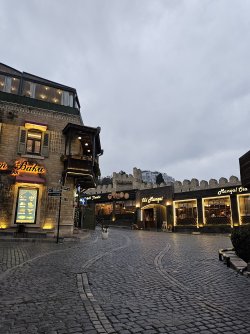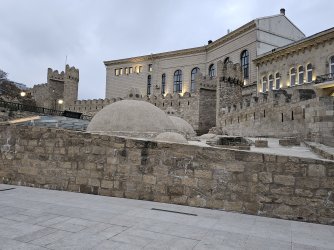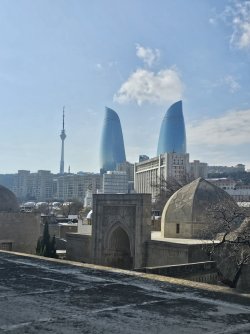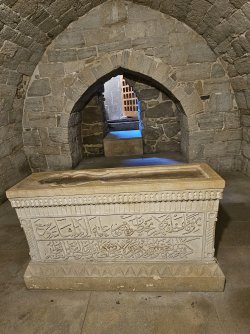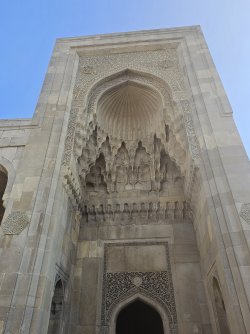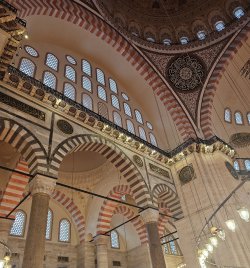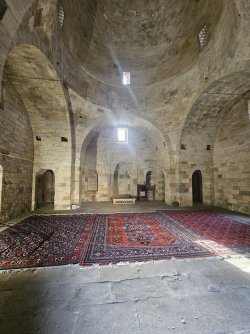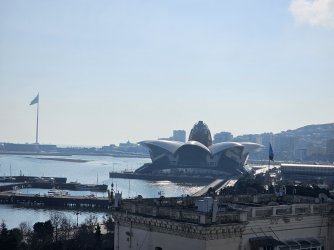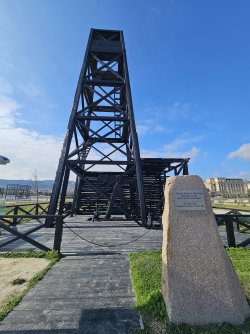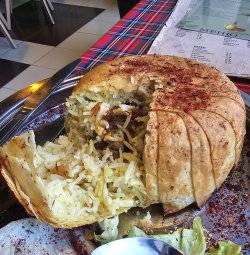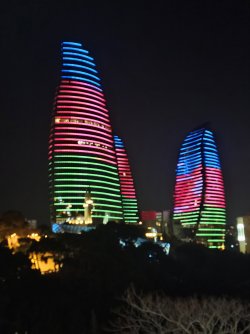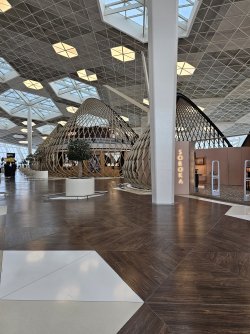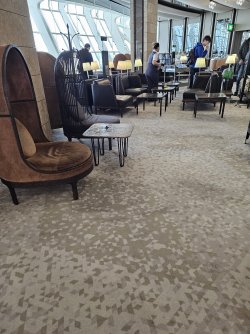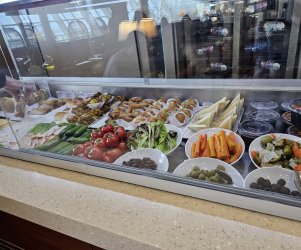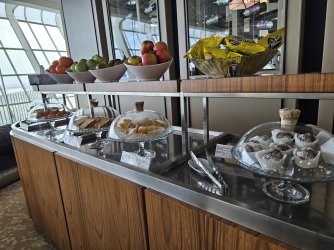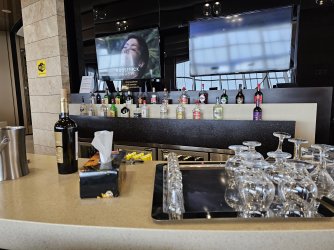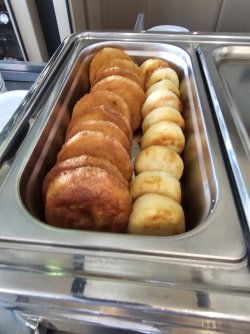- Joined
- Jan 20, 2019
- Posts
- 127
- Virgin
- Gold
Tbilisi (cont.)
A bit farther out from the city centre is the Chronicles of Georgia, a monument comprising 16 bronze pillars depicting kings in Georgia's past and biblical scenes.
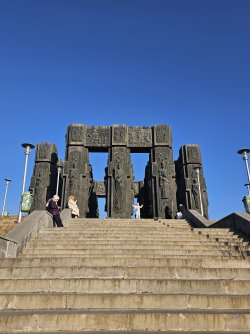
This little girl seemed pretty keen on people photographing her
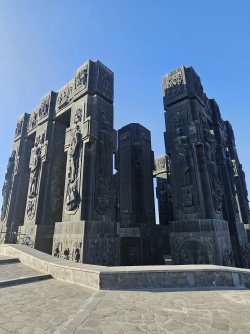
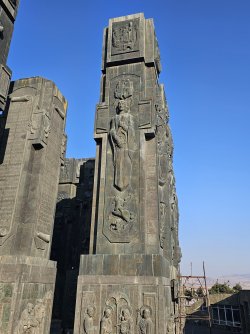
An example of one of the pillars. The bottom frames are supposed to depict Biblical stories but I found that the upper parts also had heavy references to religion and mythology, demonstrating the pervasiveness of religion in the national narrative and an esteem for previous rulers that culminates in actual or allegorical canonisation.
The Chronicles stand on a hill overlooking the artificial lake called the Tbilisi Sea:
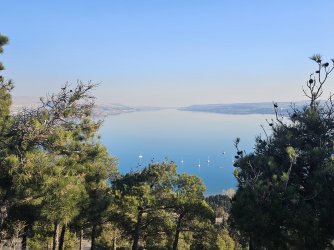
To the north and west, though, you get to see Ugly Tbilisi:
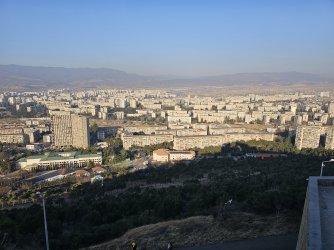
The last place I visited was the underground printing press museum in the Armenian district of Avlabari. This is where Stalin worked while in Tbilisi in the early 1900s on producing revolutionary materials. The press was underground and connected to the house above by a water well and a set of tunnels.
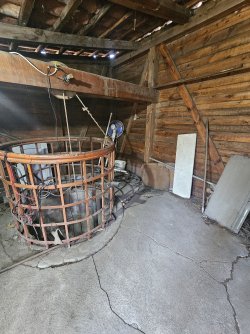
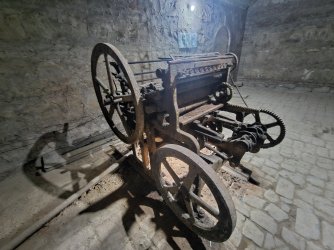
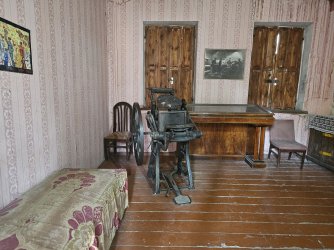
Stalin's above-ground room
In total he and his associates printed over 100,000 pieces of literature in Georgian and over 50,000 in Russian and Armenian each. It burned down in 1906 but in 1937 Stalin had it restored and opened as a museum. Today, the museum is still in his name. (Not something we do in the west much but in Eastern Europe institutions like museums, government offices, educational facilities, national academies are often 'in the name' of someone.) Over time an additional, separate building has been added.
The museum director is a gentleman called Soso (the Georgian dimunitive form of Iosef and the dimunitive Stalin himself went by) who was extremely enthusiastic. Entry was free but donations welcomed. He showed me around and then at the new museum (the second building) he apologised that the exhibition was only on one floor. The floor below, he said, would be turned into another exhibition room as well. Currently there was only a washroom downstairs and he said the toilet was better than any toilet in America. He told me to take a million photos and then left me to have a look around.
One only needs to have a look at this to figure out what Soso and his colleagues' political leanings are:
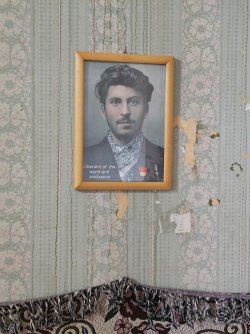
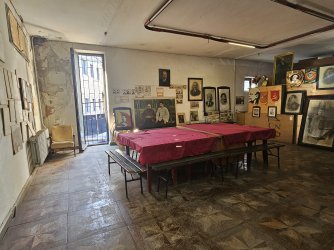
The exhibition contained many photos and paintings of Lenin and Stalin as well as newspaper clippings and quotes. It was pure propaganda. A lot of quotes and letters from Lenin were about his praise for individuals and groups who were helping spread his ideology via printing despite it being illegal. He praised their bravery and dedication to the cause.
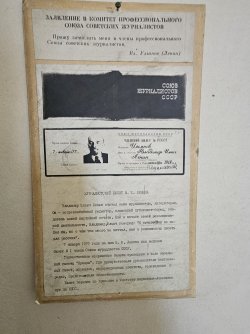
This is a copy of Lenin's press pass. He was issued the first pass in the newly founded Union of Journalists of the USSR. The text below contains this quote from him: "I have never wished, never dreamed more than of the opportunity to write for the workers."
Another frame is a story about Stalin. While he was in Batumi, he did his illegal printing from the house of a local Abkhazian peasant named Khashim, who didn't really understand much of what was going on but was agreeable to providing Stalin shelter. Khashim and his Abkhaz and Adjarian friends thought Stalin was printing counterfeit money. One day they asked him if he could help them as they were poor. Stalin said he wasn't printing money. Instead, he opened their eyes to suppression of the working class under the tsarist regime and told them he was working to overthrough the tsar. One of Khashim's friends said, "Printing money, that is something we wouldn't have understood except in the most extreme destitution. But the tsar interfering with our lives - that we can understand. And you will find in each of us a willing helper."
Another board was dedicated to pictures of the massacres, ethnic cleansings, and exections performed by the Germans, Italians and Japanese in WWII. There was, obviously, nothing on the atrocious acts of the Soviet regime.
I made a donation at the end of my visit, to help them maintain their better-than-the-US toilet. One of the other museum volunteers, who was fixing a radio at the time and watching some kind of show on a box TV probably from the Soviet times, thanked me for the donation and made me sit on a couch underneath portraits of Lenin and Stalin and a Georgian SSR flag. He took a photo on my phone and wished me well.
---
I had an interesting and productive trip to Georgia overall. It's a country of stunning natural beauty (which I would like to experience more in the summer) and substantial cultural contributions. Still struggling a little to reconcile its recent history with its national image, and plagued by an oligarchy that's keeping it back from a European-oriented future.
A bit farther out from the city centre is the Chronicles of Georgia, a monument comprising 16 bronze pillars depicting kings in Georgia's past and biblical scenes.

This little girl seemed pretty keen on people photographing her


An example of one of the pillars. The bottom frames are supposed to depict Biblical stories but I found that the upper parts also had heavy references to religion and mythology, demonstrating the pervasiveness of religion in the national narrative and an esteem for previous rulers that culminates in actual or allegorical canonisation.
The Chronicles stand on a hill overlooking the artificial lake called the Tbilisi Sea:

To the north and west, though, you get to see Ugly Tbilisi:

The last place I visited was the underground printing press museum in the Armenian district of Avlabari. This is where Stalin worked while in Tbilisi in the early 1900s on producing revolutionary materials. The press was underground and connected to the house above by a water well and a set of tunnels.



Stalin's above-ground room
In total he and his associates printed over 100,000 pieces of literature in Georgian and over 50,000 in Russian and Armenian each. It burned down in 1906 but in 1937 Stalin had it restored and opened as a museum. Today, the museum is still in his name. (Not something we do in the west much but in Eastern Europe institutions like museums, government offices, educational facilities, national academies are often 'in the name' of someone.) Over time an additional, separate building has been added.
The museum director is a gentleman called Soso (the Georgian dimunitive form of Iosef and the dimunitive Stalin himself went by) who was extremely enthusiastic. Entry was free but donations welcomed. He showed me around and then at the new museum (the second building) he apologised that the exhibition was only on one floor. The floor below, he said, would be turned into another exhibition room as well. Currently there was only a washroom downstairs and he said the toilet was better than any toilet in America. He told me to take a million photos and then left me to have a look around.
One only needs to have a look at this to figure out what Soso and his colleagues' political leanings are:


The exhibition contained many photos and paintings of Lenin and Stalin as well as newspaper clippings and quotes. It was pure propaganda. A lot of quotes and letters from Lenin were about his praise for individuals and groups who were helping spread his ideology via printing despite it being illegal. He praised their bravery and dedication to the cause.

This is a copy of Lenin's press pass. He was issued the first pass in the newly founded Union of Journalists of the USSR. The text below contains this quote from him: "I have never wished, never dreamed more than of the opportunity to write for the workers."
Another frame is a story about Stalin. While he was in Batumi, he did his illegal printing from the house of a local Abkhazian peasant named Khashim, who didn't really understand much of what was going on but was agreeable to providing Stalin shelter. Khashim and his Abkhaz and Adjarian friends thought Stalin was printing counterfeit money. One day they asked him if he could help them as they were poor. Stalin said he wasn't printing money. Instead, he opened their eyes to suppression of the working class under the tsarist regime and told them he was working to overthrough the tsar. One of Khashim's friends said, "Printing money, that is something we wouldn't have understood except in the most extreme destitution. But the tsar interfering with our lives - that we can understand. And you will find in each of us a willing helper."
Another board was dedicated to pictures of the massacres, ethnic cleansings, and exections performed by the Germans, Italians and Japanese in WWII. There was, obviously, nothing on the atrocious acts of the Soviet regime.
I made a donation at the end of my visit, to help them maintain their better-than-the-US toilet. One of the other museum volunteers, who was fixing a radio at the time and watching some kind of show on a box TV probably from the Soviet times, thanked me for the donation and made me sit on a couch underneath portraits of Lenin and Stalin and a Georgian SSR flag. He took a photo on my phone and wished me well.
---
I had an interesting and productive trip to Georgia overall. It's a country of stunning natural beauty (which I would like to experience more in the summer) and substantial cultural contributions. Still struggling a little to reconcile its recent history with its national image, and plagued by an oligarchy that's keeping it back from a European-oriented future.








